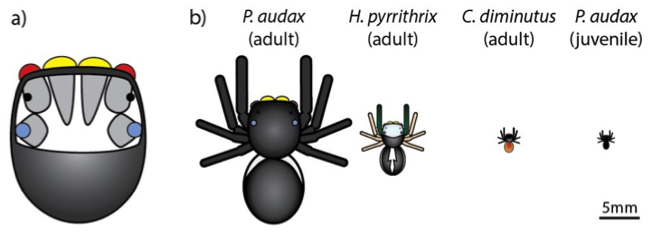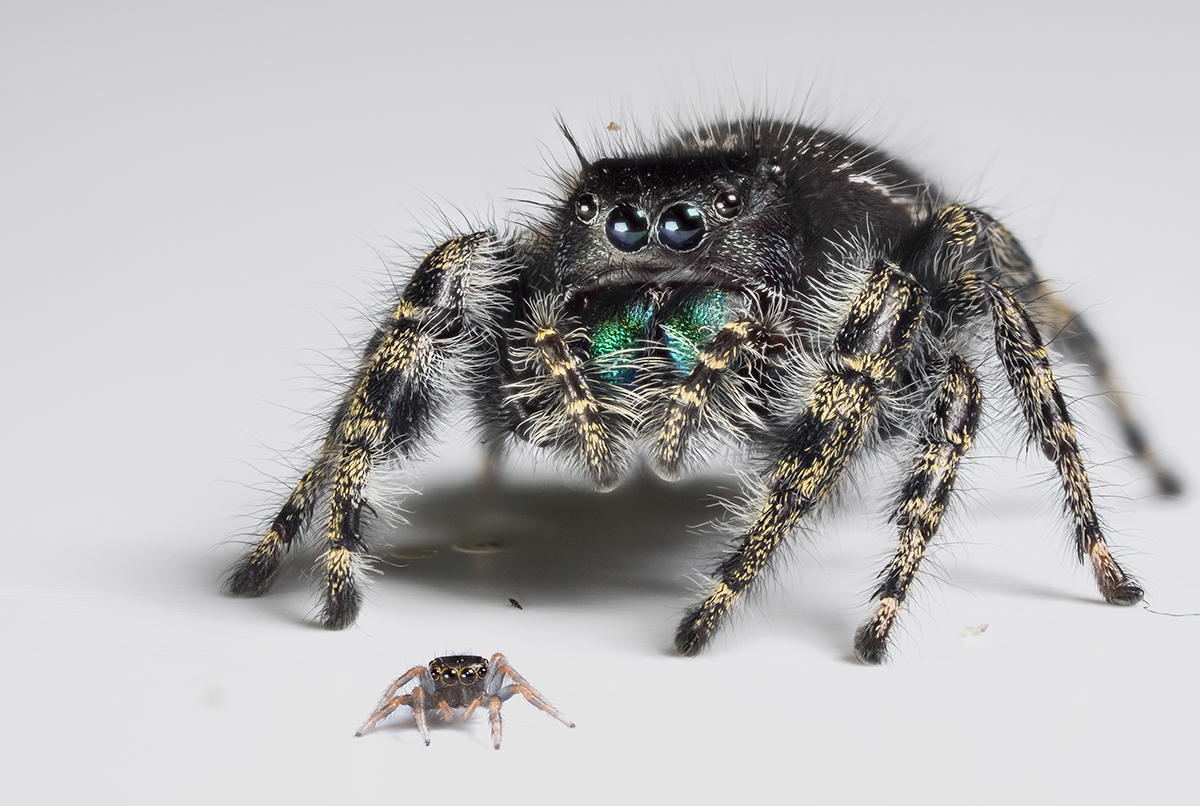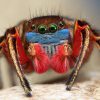Figure 1. a) Schematic of the modular visual system of a typical jumping spider, with the lenses of eye pairs distinguished by color. b) Illustrations of body size range in adults and juveniles of the focal research species Phidippus audax, Habronattus pyrrithrix, and Chalcoscirtus diminutus



Figure 2. Phidippus audax, adult female (body length ca. 15mm), with 1st instar offspring of the same species in foreground (body length ca 2mm). Both are active predators.
Project Background
Visual systems face numerous challenges at small scale. Qualities such as spatial resolution, low-light sensitivity, field of view, color discrimination, etc. are inherently limited by the space available for expansion of light-sensitive surfaces and larger optics. Jumping spiders are the champions of miniaturized vision, exceeding the “best” insects by an order of magnitude. They have addressed these problems by splitting visual functions between four specialized single-lens eye pairs (Fig. 1a). For practical reasons, work on jumping spider vision to date has focused exclusively on the visual systems of adult jumping spiders, typically of the largest-bodied species (body length >10 mm, Fig. 1b). With near-perfect optics and small photoreceptors, these spiders appear to already be working at physical limits. However, most salticid species are much smaller. Furthermore, juvenile salticids can be orders of magnitude smaller than their parents (Fig. 2), and yet these tiny, voracious predators exhibit many of the same vision-based behaviors. This raises an important, unanswered question: How do these modular visual systems maintain high performance in the face of extreme miniaturization?
Current Work
We are in the initial stages of this project. We will explore miniature vision in developmental stages of three jumping spider species with large-, medium- and small-bodied adults (Fig. 1b). We have developed rearing methods that allow us to individually rear fragile spiderlings from hatching to adulthood. This allows us to quantify developmental changes in the visual system, such as the allometric increase in lens size for the different eye pairs. Furthermore, in collaboration with the Buschbeck Lab at the University of Cincinnati, we can measure lens optics and retinal development repeatedly in the same individual as it grows.
Relevant Lab Publications
Coming soon…


